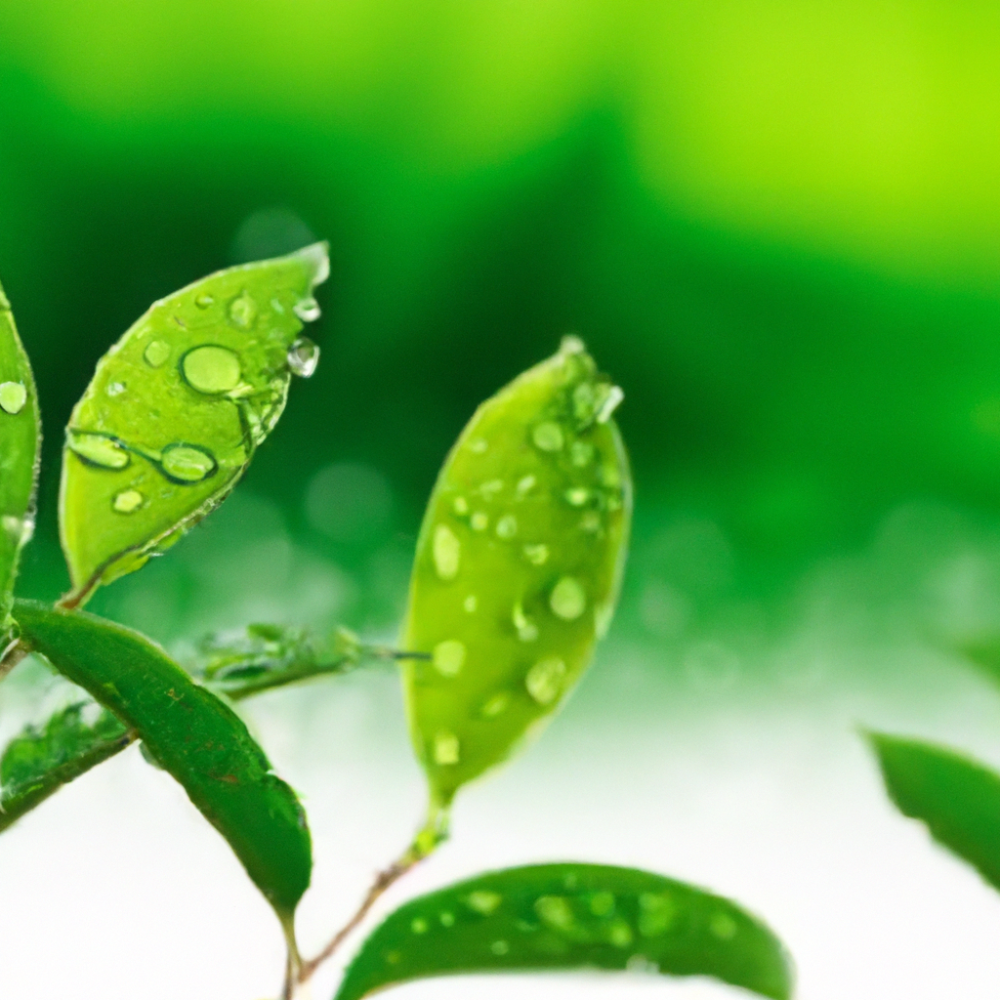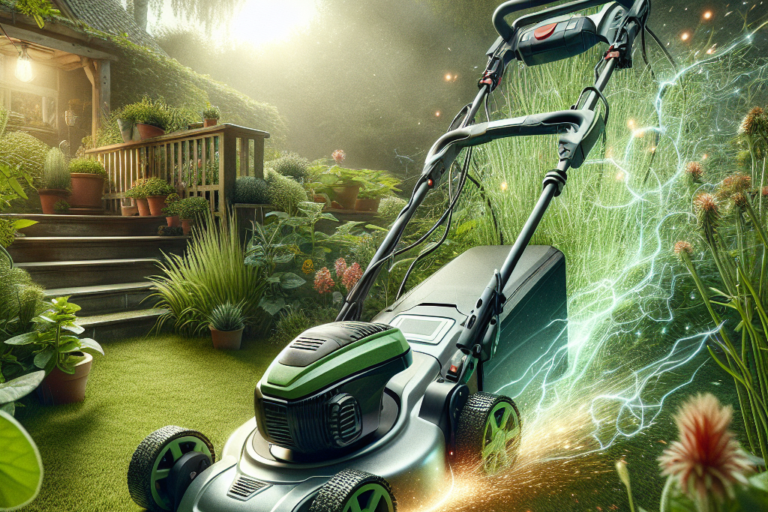Are you looking for the secrets to maintaining a healthy and vibrant lawn? Well, look no further because we have the answer for you! In this article, we will explore the best practices for watering your lawn to ensure its optimal health. Whether you have a sprawling garden or a compact green space, we will guide you through the steps to achieve a thriving and lush lawn. Say goodbye to dry patches and yellow grass, and say hello to a yard that will be the envy of the neighborhood!
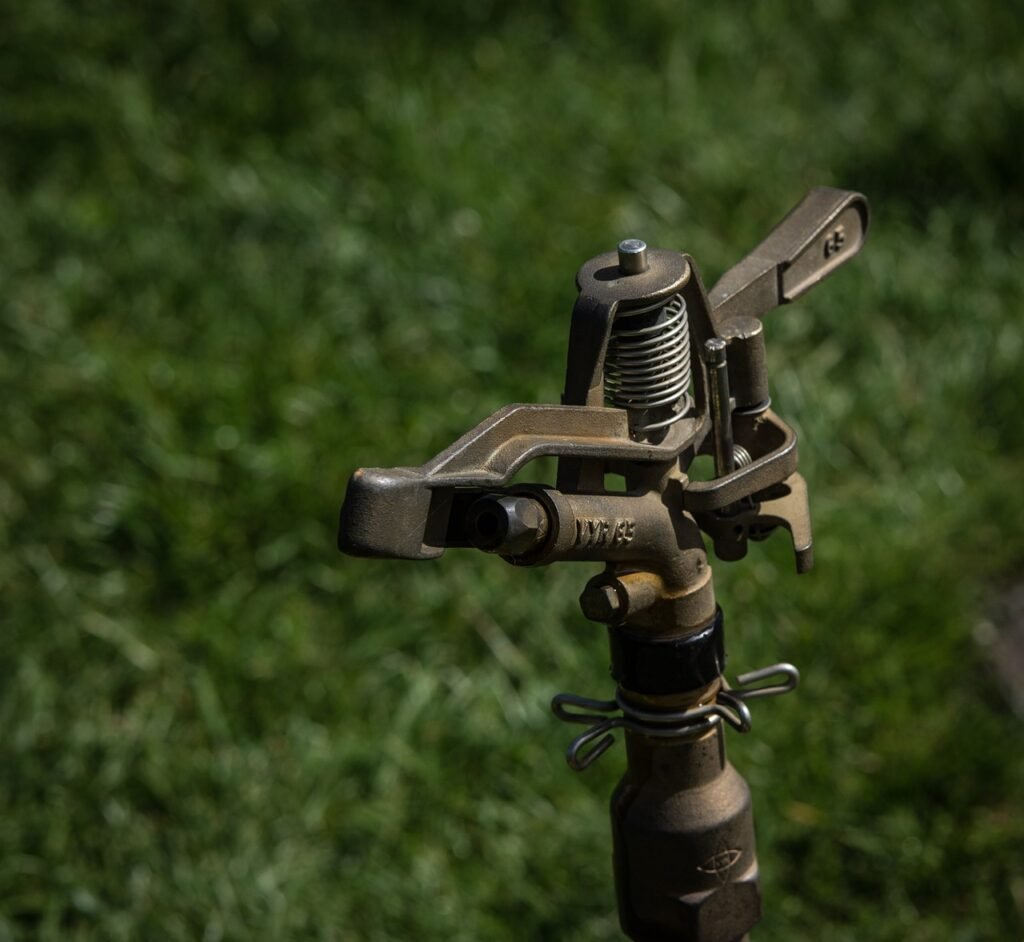
Choosing the Right Time
Morning is the Best
When it comes to watering your lawn, choosing the right time of day is crucial. The morning is often considered the best time to water your lawn because the temperatures are cooler, and the wind is usually calmer. This allows the water to penetrate the soil effectively without being evaporated or blown away. Watering in the morning also gives the grass blades time to dry before the evening, which reduces the risk of diseases caused by damp conditions.
Avoid Watering in the Evening
While morning is the preferred time for watering, it’s important to avoid watering your lawn in the evening. Watering at this time can lead to stagnant moisture on the grass blades and soil overnight, providing an ideal environment for fungus and diseases to thrive. Additionally, watering in the evening increases the chance of water droplets sitting on the grass for too long, promoting the growth of mold and attracting pests. It’s best to give your lawn ample time to dry before the evening sets in.
Determining the Frequency
Consider the Grass Type
Different grass types have varying water requirements, so it’s important to consider the type of grass you have in your lawn when determining watering frequency. Cool-season grasses, such as Kentucky bluegrass and fescue, typically require more frequent watering compared to warm-season grasses like Bermuda grass or Zoysia grass. Understanding the specific water needs of your grass type will help you establish an appropriate watering schedule and avoid both over and underwatering.
Account for Weather Conditions
In addition to considering the grass type, it’s crucial to account for current weather conditions when determining the frequency of lawn watering. During periods of high temperatures or drought, your lawn will require more frequent watering to compensate for the increased evaporation. On the other hand, if there has been sufficient rainfall or cooler temperatures, you may be able to reduce the frequency of watering. Regularly monitoring the weather forecast and adjusting your watering schedule accordingly will help keep your lawn healthy.
Measuring Watering Depth
Understanding Root Depth
Understanding the depth of your lawn’s roots is essential for effective watering. Most grass types have roots that extend between 4 to 6 inches deep. To promote healthy root growth, it’s crucial to ensure that the water reaches this depth when watering your lawn. Watering too shallowly can lead to weak, shallow roots, making your lawn more susceptible to drought and other stresses. By aiming for the appropriate watering depth, you provide your lawn with a strong foundation to withstand various environmental conditions.
Using the Screwdriver Method
One popular technique for measuring watering depth is the screwdriver method. Simply take a long screwdriver and insert it vertically into the ground after you’ve watered your lawn. If the screwdriver easily penetrates the soil to the desired depth of around 4 to 6 inches, it’s a good indication that you’ve watered your lawn adequately. If the screwdriver doesn’t go in smoothly or encounters resistance, it’s a sign that you may need to adjust your watering duration.
Watering Techniques
Use Sprinklers Wisely
Using sprinklers is a common method for watering lawns, but it’s essential to use them wisely to ensure even and efficient water distribution. Avoid running your sprinklers during windy conditions, as the wind can cause water to be lost to evaporation or carried away from your lawn. It’s also important to adjust the sprinkler heads so that they water the lawn and not sidewalks or driveways. Regularly check for any malfunctioning sprinklers or blockages that may lead to uneven watering.
Watering Zones Effectively
Different areas of your lawn may have varying water needs, especially if you have different types of vegetation or varying levels of sun exposure. Dividing your lawn into watering zones allows you to cater to these specific needs more efficiently. For example, areas with more shade may require less water, while areas with newly planted sod might need extra attention. By adjusting the watering schedule for each zone, you can prevent overwatering or underwatering in different areas of your lawn.
Avoid Overwatering
While it’s important to ensure your lawn receives enough water, overwatering can be detrimental to its health. Excessive watering can lead to shallow root growth, making your lawn more vulnerable to pests, diseases, and drought. It can also waste water and contribute to environmental issues such as runoff and waterlogging. To avoid overwatering, pay attention to the signs of overhydration, such as wilting grass, spongy soil, or the presence of fungus. Adjust your watering schedule accordingly and aim for deep, infrequent watering to promote strong and healthy roots.
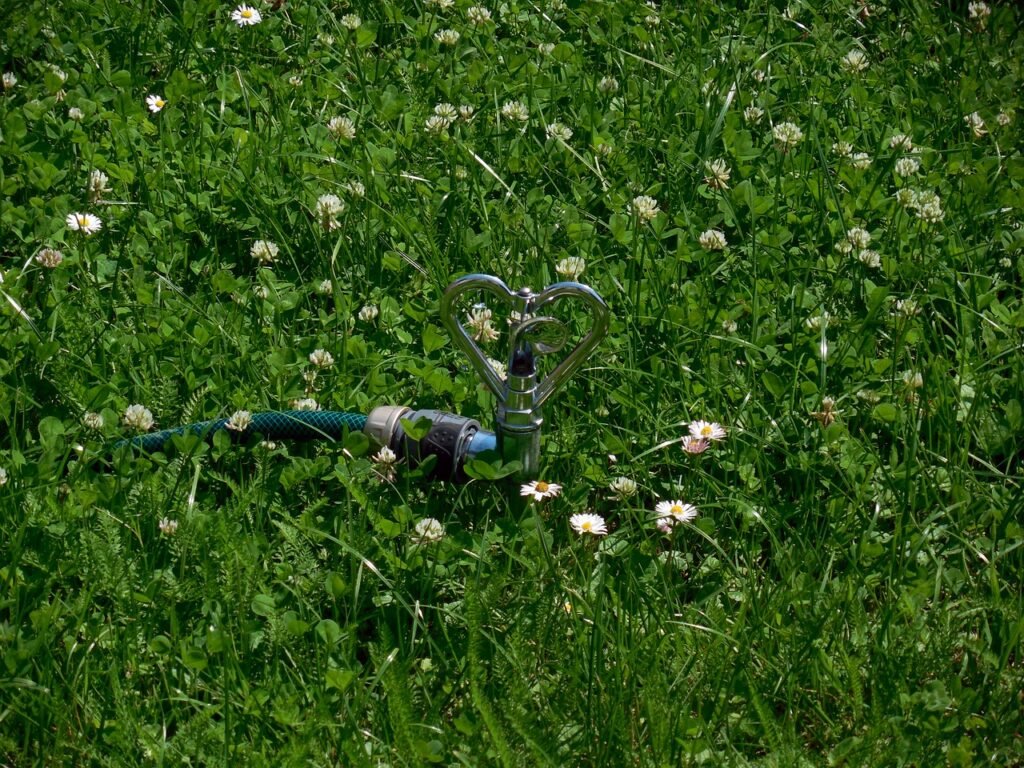
Water Conservation Tips
Group Plants with Similar Water Needs
Efficient water use can be achieved by grouping plants in your lawn based on their water requirements. By planting vegetation with similar needs together, you can water them more effectively. This way, you can avoid overwatering certain areas while ensuring others get the necessary amount of water. Grouping plants with similar water needs not only conserves water but also promotes healthier growth and reduces the risk of diseases caused by uneven watering.
Install a Rain Sensor
Installing a rain sensor is a smart investment that promotes water conservation. Rain sensors detect rainfall and automatically shut off your irrigation system when a sufficient amount of water has already been provided by nature. This prevents unnecessary watering during or shortly after rain events, saving both water and money. Rain sensors are easy to install and can be adjusted based on the specific rainfall threshold you prefer.
Consider Drip Irrigation
Drip irrigation is a highly efficient watering method that delivers water directly to the roots of plants, minimizing wastage and preserving water. This system uses a network of tubes or hoses with small emitters that release water slowly and precisely. Drip irrigation is particularly beneficial for areas with shrubs, trees, or gardens with different watering needs. It can also be used to accurately water specific zones or plants within your lawn, reducing water usage and encouraging deep root growth.
Smart Irrigation Systems
Benefits of Smart Irrigation
Smart irrigation systems offer numerous benefits when it comes to maintaining a healthy lawn while conserving water. These systems use advanced technology and data analysis to optimize watering schedules based on weather conditions, soil moisture levels, and plant needs. By utilizing accurate sensors and real-time information, smart irrigation systems can deliver the right amount of water at the right time, minimizing wastage and reducing water bills. Additionally, these systems often come with user-friendly interfaces or smartphone apps, making it easier for you to monitor and manage your lawn’s watering needs.
Types of Smart Irrigation Controllers
There are several types of smart irrigation controllers available to suit different needs and budgets. Weather-based controllers use weather data to adjust the watering schedule automatically. Soil moisture-based controllers monitor the moisture levels in the soil and water accordingly. ET or evapotranspiration controllers measure weather conditions, such as temperature and humidity, to determine the watering needs. Some controllers can even be integrated with weather apps or connected to Wi-Fi for remote access. Choosing the right type of smart irrigation controller depends on your specific requirements and the environmental conditions in your area.
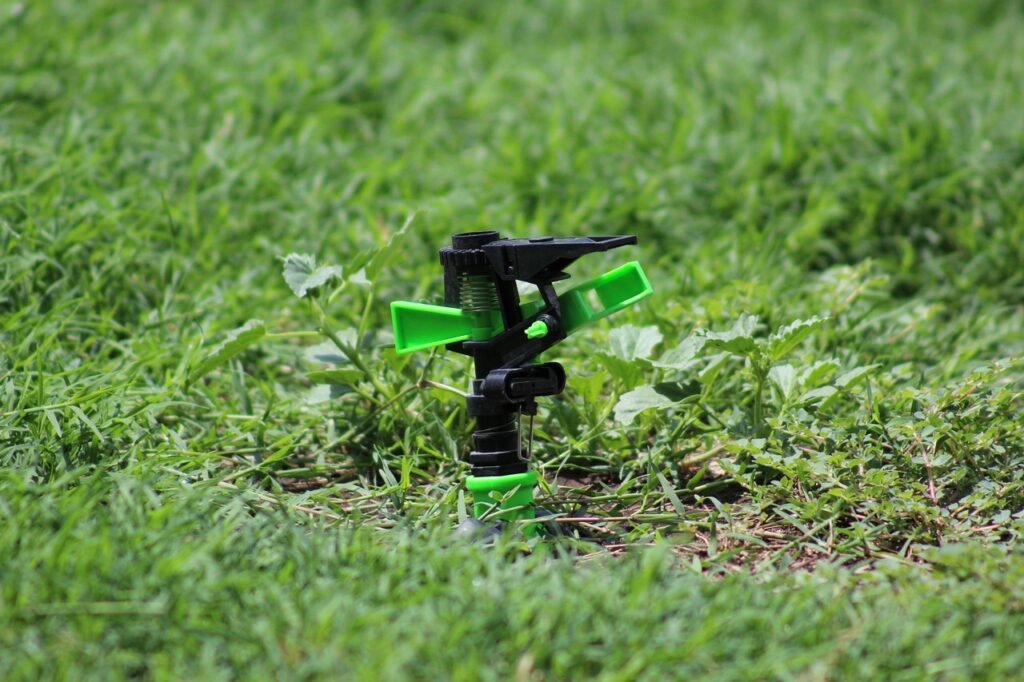
Seasonal Adjustments
Adjusting for Different Seasons
As the seasons change, so do the water needs of your lawn. During the hot summer months, you may need to increase the frequency and duration of watering to compensate for higher evaporation rates and increased plant transpiration. In cooler seasons or during periods of rainfall, you can reduce the frequency of watering. It’s important to regularly assess your lawn’s condition and adapt your watering schedule accordingly to ensure optimal health throughout the year.
Winter Watering Tips
While lawn growth slows down during the winter months, it’s still important to provide adequate hydration. Winter watering helps prevent the grass from going dormant for extended periods and encourages root growth. Watering once every three to four weeks is usually sufficient, aiming for a deeper soaking to reach the root zone. However, be cautious of water freezes, as ice formation can damage both the grass and irrigation system. It’s best to water early in the day when temperatures are slightly higher to allow for proper absorption before freezing temperatures arrive.
Other Factors to Consider
Soil Type and Drainage
The type of soil in your lawn plays a significant role in determining the watering needs. Sandy soils drain water quickly, requiring more frequent watering. On the other hand, clay soils retain water for longer periods, reducing the need for frequent watering. Understanding your soil type and its drainage properties will help you adjust your watering schedule accordingly and ensure optimal moisture levels for your lawn.
Mulching the Lawn
Mulching your lawn is a beneficial practice that helps conserve water and improve soil moisture retention. A layer of organic mulch, such as wood chips or grass clippings, can help reduce evaporation, regulate soil temperature, and inhibit weed growth. By cutting down on evaporation, mulch minimizes the water lost to the atmosphere and allows your lawn to stay hydrated for longer periods. It also adds nutrients to the soil as it breaks down and contributes to overall soil health.
Mowing Height
Maintaining the proper mowing height for your lawn can indirectly affect its water requirements. By keeping your grass slightly longer, you help shade the soil, reducing evaporation and preserving moisture. Taller grass also encourages stronger root growth, making your lawn more resilient and better able to withstand drought conditions. Adjusting your mowing height based on the grass type and season can have a significant impact on water conservation and the overall health of your lawn.
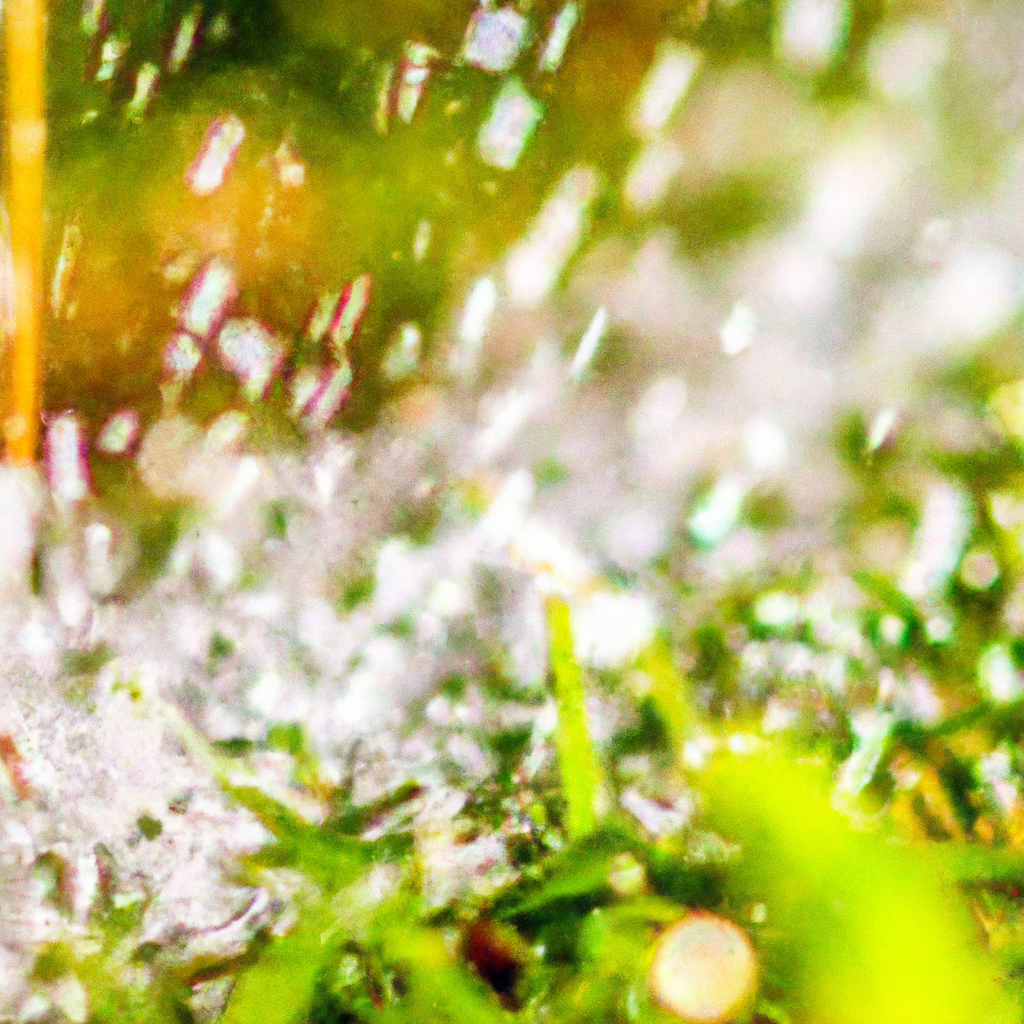
Common Mistakes to Avoid
Underwatering
Underwatering your lawn can lead to stress and damage. Signs of underwatering include wilted or discolored grass, dry and compacted soil, and footprints that stay visible for an extended period. To prevent underwatering, regularly monitor the moisture levels in the soil and adjust your watering schedule accordingly. Aim for deep, infrequent watering to encourage strong root growth and prevent shallow roots that are more susceptible to drought.
Overwatering
Overwatering is a common mistake that can harm your lawn and waste water. Signs of overwatering include soggy soil, an increase in pests and diseases, and grass that feels squishy or spongy underfoot. To avoid overwatering, regularly inspect your lawn for signs of overhydration and adjust your watering schedule accordingly. Invest in tools such as rain sensors or moisture meters to accurately gauge your lawn’s watering needs and prevent unnecessary water usage.
Uneven Water Distribution
Ensuring even water distribution is crucial for a healthy and attractive lawn. Uneven watering can result in patchy areas, overhydrated spots, or dry patches. To prevent this, regularly inspect your sprinkler system for any malfunctioning heads or blockages that may disrupt the even flow of water. Adjust sprinkler heads as necessary to cover the entire lawn effectively. Dividing your lawn into watering zones, as mentioned earlier, can also help address any potential issues with uneven water distribution.
Conclusion
Proper lawn watering is key to maintaining a healthy and vibrant lawn. By following these tips and techniques, you can establish an effective watering routine that promotes strong root growth, conserves water, and enhances the overall health of your lawn. Remember to choose the right time to water, consider the grass type and weather conditions, measure watering depth accurately, employ appropriate watering techniques, and implement water conservation strategies. By avoiding common mistakes and regularly adjusting your watering schedule based on seasonal and environmental factors, you’ll ensure that your lawn remains beautiful and thriving throughout the year.
